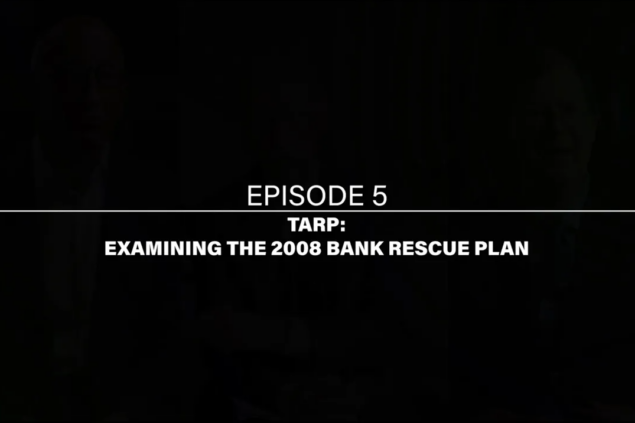May I Offer You Some Guidance?
Wayne A. Abernathy

Congress is accountable for the laws that it writes. Government agencies are accountable for the regulations by which they implement laws. How accountable is a government agency for the “guidance” that it gives regarding those laws and regulations?
There is an elaborate process for making laws. The Administrative Procedure Act imposes on agencies a detailed public process for creating regulations. Where is the process for the “guidance” that agencies develop?
In the banking world, with which I am familiar, the general belief has been that you disobey supervisory guidance at your peril. That sounds like law and regulation, but without the open process and accountability. Over many years it has certainly felt that way.
Perhaps on September 11, 2018, that changed. The Federal Reserve Board, the FDIC, the Office of the Comptroller of the Currency, the National Credit Union Administration, and the Bureau of Consumer Financial Protection issued on that day a joint statement “Clarifying the Role of Supervisory Guidance”.
As a regulatory emission it is relatively concise (two pages) and clear. A few key excerpts from the joint statement illustrate a significant change in direction:
Difference between supervisory guidance and laws or regulations
Unlike a law or regulation, supervisory guidance does not have the force and effect of law, and the agencies do not take enforcement actions based on supervisory guidance. [Emphasis in the original]
That declaration is a true and faithful legal statement, but it would be an incorrect description of past practice. Many a bank carries the scars of enforced supervisory guidance. It is a valuable statement, though, as an affirmation of practice for these agencies henceforth. This is what the joint statement says about ongoing efforts:
Ongoing agency efforts to clarify the role of supervisory guidance
Examiners will not criticize a supervised financial institution for a “violation” of supervisory guidance. Rather, any citations will be for violations of law, regulation, or non-compliance with enforcement orders or other enforceable conditions. [Emphasis in the original]
That feels very much like the dawn of a new day. Regulated financial institutions often seek and appreciate guidance. We can all use a bit of guidance. Sometimes we can be better for it, sometimes not. When a bank examiner, however, cites and enforces guidance as if it were the law, then opinion, arbitrariness, abuse, and departure from the law can result. The agencies’ declaration instructs us that those days are going, going, and maybe gone.
Practitioners made skeptical by years of guidance abuse may wonder whether regulators may find ways around what seems like very clear language in the joint statement. There may be some ground for uncertainty. Keep this in mind: the joint statement very appropriately and wisely reminds us that bank regulators retain core supervisory authority to respond to anything that they find in a bank that they consider unsafe or unsound or a deficiency in risk management. The joint statement points to guidance as informing safety and soundness considerations for banker and regulator alike.
Nevertheless, the words of the joint statement are declared with such clarity and affirmed by all five agencies jointly, that it would be difficult to invoke supervisory judgment to enforce guidance in a blanket way across the entire industry or even across significant segments of it rather than in a case-by-case manner. And even as applied to an individual institution, the joint statement on guidance would seem to offer grounds for an engaging discussion between bank and supervisor on how an element of guidance might apply.
A second issue has been raised by some. In recent years banks have questioned a recurring practice by examiners to serve banks with findings of “Matters Requiring Attention” (MRAs) and “Matters Requiring Immediate Attention” (MRIAs) where the findings rest on interpretations of supervisory guidance. The joint statement explicitly states that “the agencies do not take enforcement action based on supervisory guidance.”
The question arises, are MRAs and MRIAs “enforcement action.” In a formal letter to its examiners and the banks that they examine, the Federal Reserve wrote in June 2013 that MRAs and MRIAs are issued “when examiners expect the banking organization to take action”. Elsewhere in the letter the Fed describes MRAs as issues that “must be addressed”. MRIAs are described as matters that the Fed “requires banking organizations to address immediately”. If MRAs and MRIAs are indeed enforcement actions, then to be consistent with the joint statement they must rest on a firmer basis than guidance.
All in all, it is hard to see this joint agency statement as anything less than a major step back from the practice of recent years of dressing guidance in the costume of law. Guidance from regulators to the regulated can be valuable when kept within the bounds of genuine guidance. When it moves toward compulsion, it moves onto ground obnoxious to the rule of law. The joint statement of five financial regulators reinforces that understanding.

Author
Former Assistant Secretary for Financial Institutions
U.S. Department of the Treasury
Topic
The Federalist Society and Regulatory Transparency Project take no position on particular legal or public policy matters. All expressions of opinion are those of the author(s). To join the debate, please email us at [email protected].




